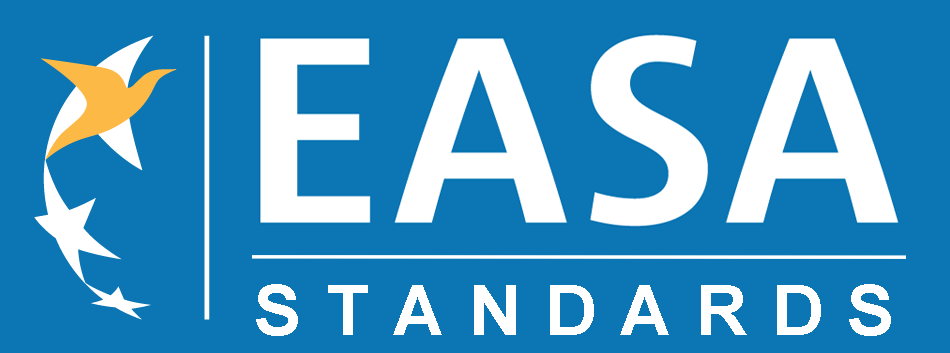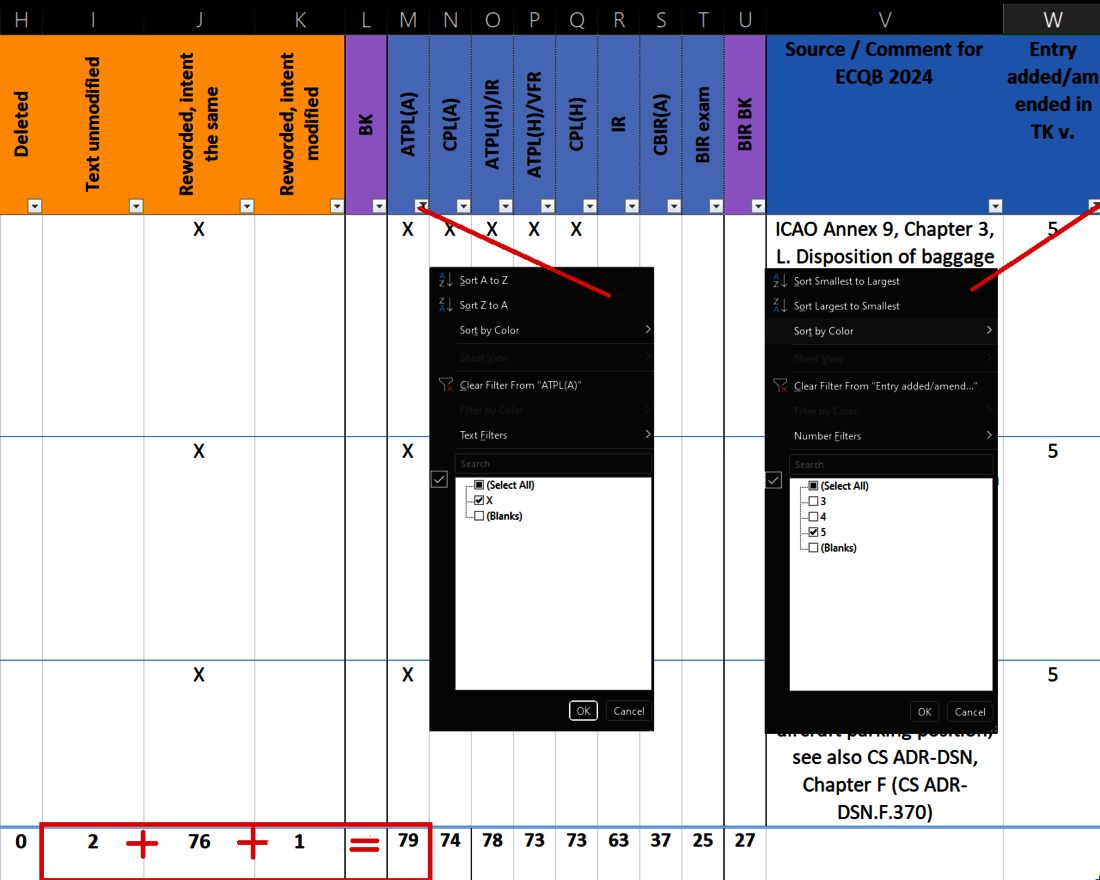
ECQB2024 Update Explanation - TK Syllabus Comparison Document v5

Reader instructions
We have received a lot of questions regarding the ECQB2024 update and instead of replying one by one I decided it's better to explain how to read the file so you can understand future updates as well. Once you finish reading this post I’m certain you will realize that this ECQB update is nothing to stress about. For those of you who do not care about how to read the file there is a summary at the end of the post. The excel file is available here.
Click on the picture to make it bigger!
On the first Sheet (see picture above) Reader instructions, this is the most important information for us:
Some "Source" information is edited or newly added for specific LOs - this can be identified by filtering for "5" on the column "Entry added/amended in TK v."
This means if we filter for this it will show us new entries added in the latest update v5 (More on filters later)
Understanding Learning Objectives aka LO's
Click on the picture to make it bigger!
For the sake of this explanation, we will use 010 – Air Law.
Let’s select that subject on the excel sheet or refer to the picture above and examine our sample objective.
Learning Objective : Define the term ‘transition altitude (TA)’
Question 1: Which statement is true about the transition altitude?
- The altitude below which the vertical position of the aircraft is determined by reference to QFE
- The altitude below which the vertical position of the aircraft is determined by reference to 1013 hPa.
- The altitude above which the vertical position of the aircraft is determined by reference to local QHN
- The altitude at which 1013 hPa is set during a climb and vertical postion is then reported as flight levels.
Question 2: Where the transition altitude is shared between 2 different aerodromes, the common transition altitude is:
- The average between the 2 aerodromes.
- The highest between 2 aerodromes.
- The lowest between 2 aerodromes.
- The aerodrome that has more traffic
As you can see two completely different questions but both refer to the same LO. In the ECQB database and in your selected question banks there can be several questions referring to the same LO. The exact number and wording is of course a closely guarded secret and are only known to a few select personnel from EASA and the National Aviation Authorities.
This is the reason we collect exam feedback to serve you with the most accurate questions, and you are also requested to provide feedback after your exams to keep the database up to date for future candidates.
EASA has removed the detailed source references to reduce the need for amendments, and provides the information in the TK Syllabus Comparison Document instead, future updates will be available on this LINK
How to set up filters
Click on the picture to make it bigger!
We are still on sheet Air Law enable filters by clicking the small grey square with the triangle pointing down, as seen on the picture above in Column M select(X) and Column W select(5).
Scroll to the bottom, and notice the numbers in the following three Columns:
Column I (Text unmodified) : The wording of the LO is exactly the same between the two syllabi (2 entries)
Column J (Reworded intent is same) : The LO is only reworded but there is no significant changes. (76 entries)
Column K (Reworded intent modified) : This means the learning objective has a significant change (1 entry)
Now we can sum these up to get the number 79. This means there are 79 entries regarding ATPL(A) Air Law subject in v5.
2 LO's are unchanged, 76 LO's are reworded and 1 LO has been modified significantly. You can scroll up to see the affected learning objective, in case of Air Law the only significant change is regarding:
Describe the runway condition codes and the associated runway braking action.
Repeat the process to any of the subjects. If there is no filter (5) in Column W that just means there are zero new entries added in v5.
Summing up the latest changes
Let me highlight the recent significant changes below. I wont list the reworded ones because the post would be way too long. In case you want to check the reworded LO's you must download the file, and enable this 3 filters:
Column J(x) Column M(x) and Column W(5).
List of changes for ATPL(A) v5
Air Law : Reworded 76 - Significant change: 1
- Describe the runway condition codes and the associated runway braking action
AGK Systems, Airframe : No change
AGK Instrumentation : No change
Mass & Balance : No change
Performance : No change
Flight Planning : No change
Human Performance : No change
Meteorology : Reworded 2
Gen Nav : No change
Radio Nav : No change
Ops procedures : Reworded 71 – Significant change: 3
- State that frequencies from the lower HF bands tend to be used for communications during night-time and those from the higher bands during daytime. When initiating contact with an aeradio station, the pilot should state the HF frequency in use.
- Describe the strategic lateral offset procedure (SLOP) and state that along a route or track there will be three positions that an aircraft may fly: centre line, or up to 2 NM right.
- State the general procedures and also state that the general concept of these NAT in-flight contingency procedures is, whenever operationally feasible, to offset the assigned route by 5 NM and climb or descend to a level which differs from those normally used by 500 ft if below FL 410 or by 1 000 ft if above FL 410.
Principles of Flight : No change
Communications : No change
As you can see the changes are mostly rewording. The LO's that have changed significantly it is expected to see a few brand new questions. The rest should be grammatical improvements, abbreviations written out or terms abbreviated. Hope this clears up the confusion and help you relax a little bit before your next exam sitting.
If you have any further questions on the matter, or any queries regarding licence conversions, we are experts when there is need for more complex solutions and we can assist you in several locations.
Good luck!

Attila Kis
ATPL Course Supervisor
a.kis@easy-pilot.com




